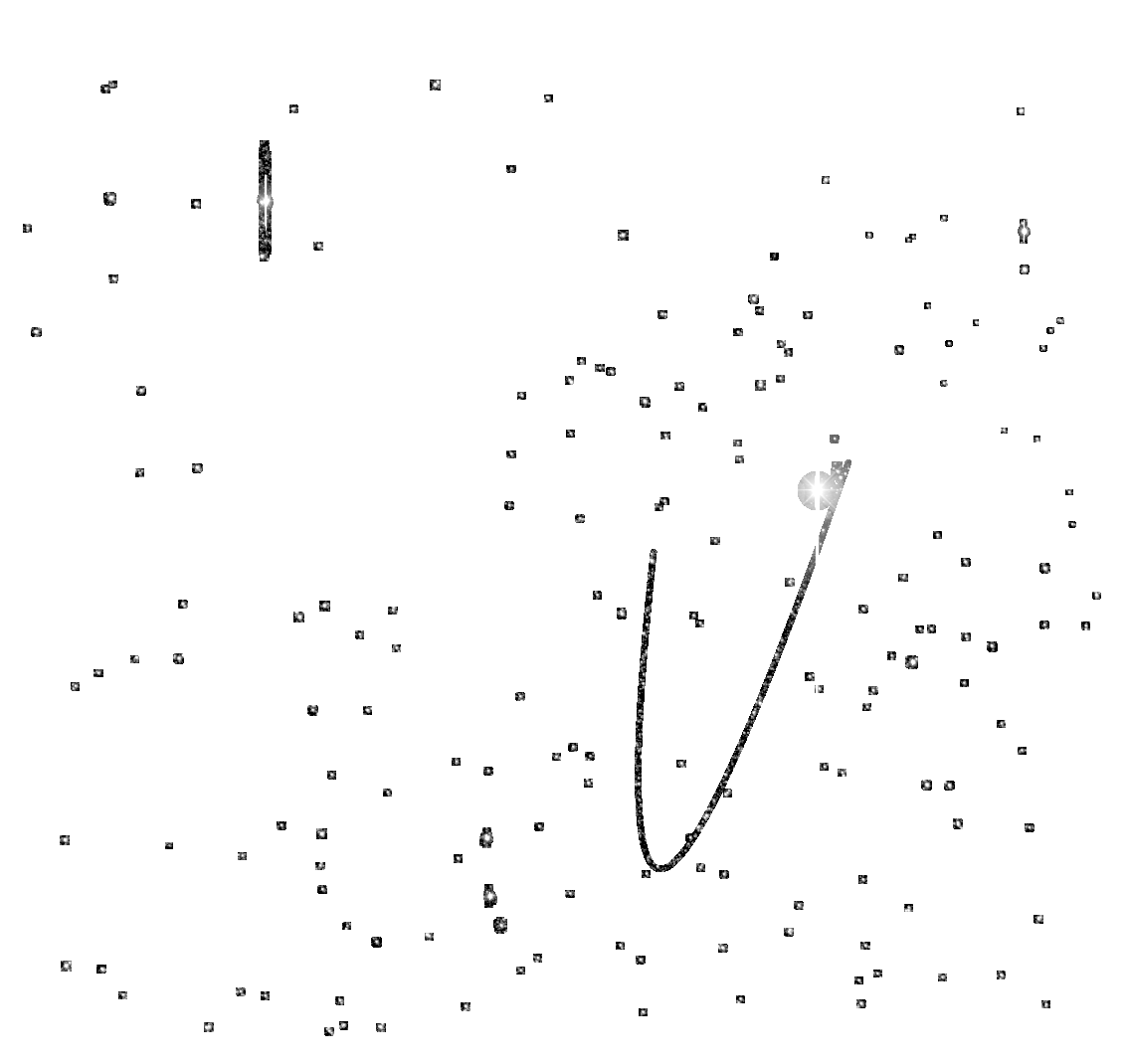Example: Pluto mosaic¶
The K2 mission observed Pluto on CCD channel #65 during Campaign 7. The observed pixels are available as a series of Target Pixel Files (TPFs) from the K2 archive, each covering only a part of Pluto’s trajectory. This basic example shows how you can identify and mosaic the TPFs to obtain a single image of Pluto’s track and the surrounding stars.
First we need to create a list of the TPFs we wish to mosaic,
This can be done using the k2mosaic list command,
which takes a campaign and channel number as argument
and queries the archive to determine the URLs
of all the pixel files we need.
In our case we are interested in Campaign 7, channel 65:
$ k2mosaic tpflist 7 65 > list-of-target-pixel-files.txt
You can then then pass this list to the k2mosaic mosaic tool,
which takes the list as argument.
We use the --cadence last option to specify
that we only wish to mosaic the final cadence of the Campaign:
$ k2mosaic mosaic list-of-target-pixel-files.txt --cadence last
This command will download all the required TPFs
(hundreds of MBs)
and produce a FITS image called k2mosaic-c07-ch65-cad119456.fits.
You can then open this file using your favourite FITS image viewer,
or you can create a quicklook png image using the fits2bitmap tool
which is added to the command-line by AstroPy:
$ fits2bitmap k2mosaic-c07-ch65-cad119456.fits --scale log --min_cut 1 --max_cut 20000
The output shows an arc, which are the pixels which the Kepler spacecraft stored to cover the trajectory of Pluto during the Campaign:
